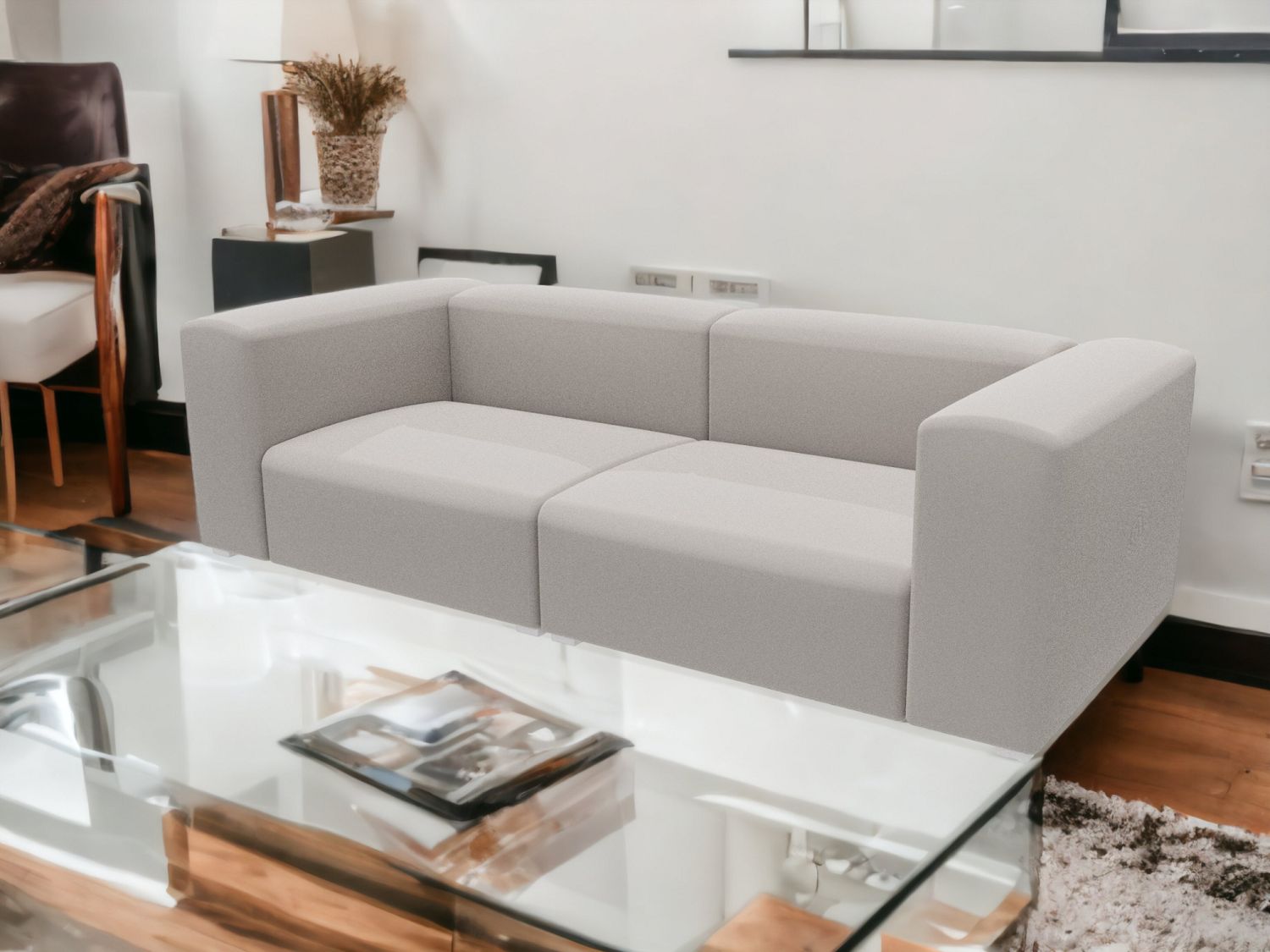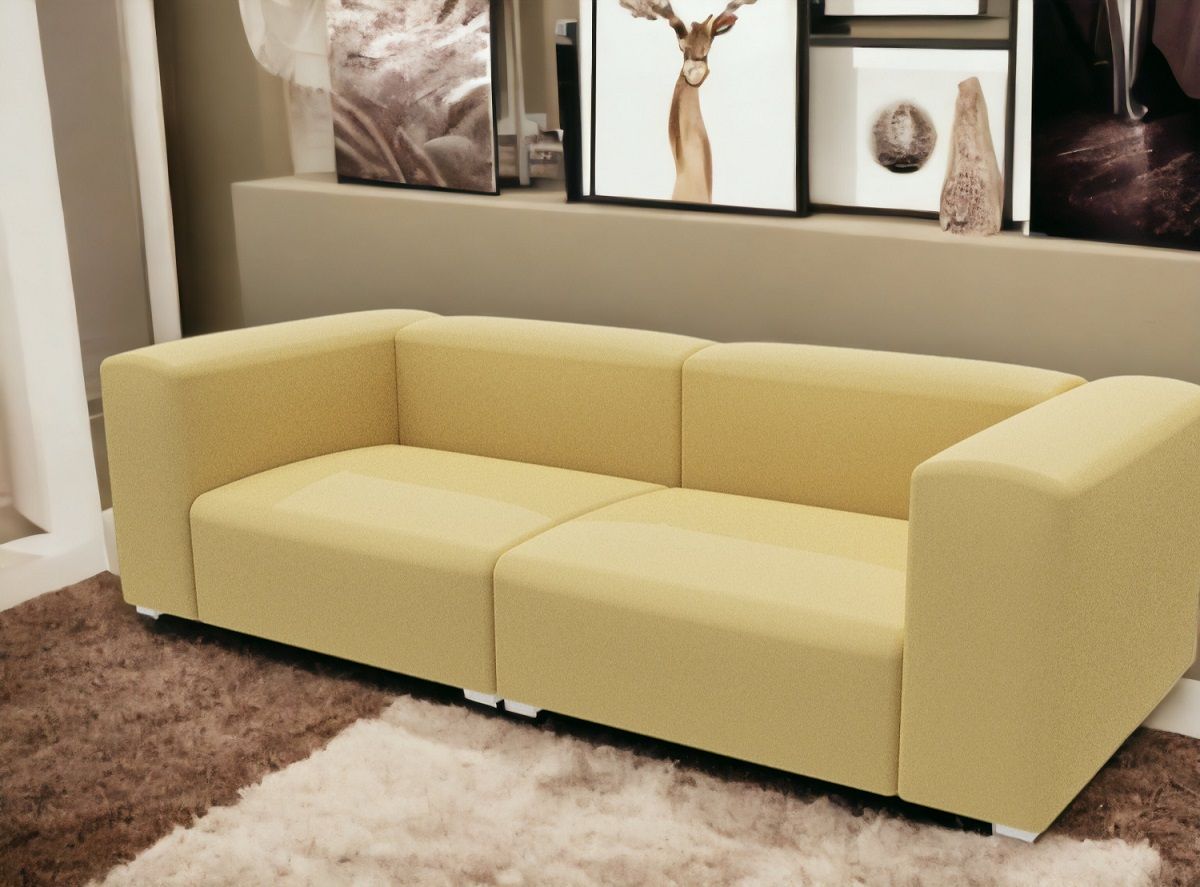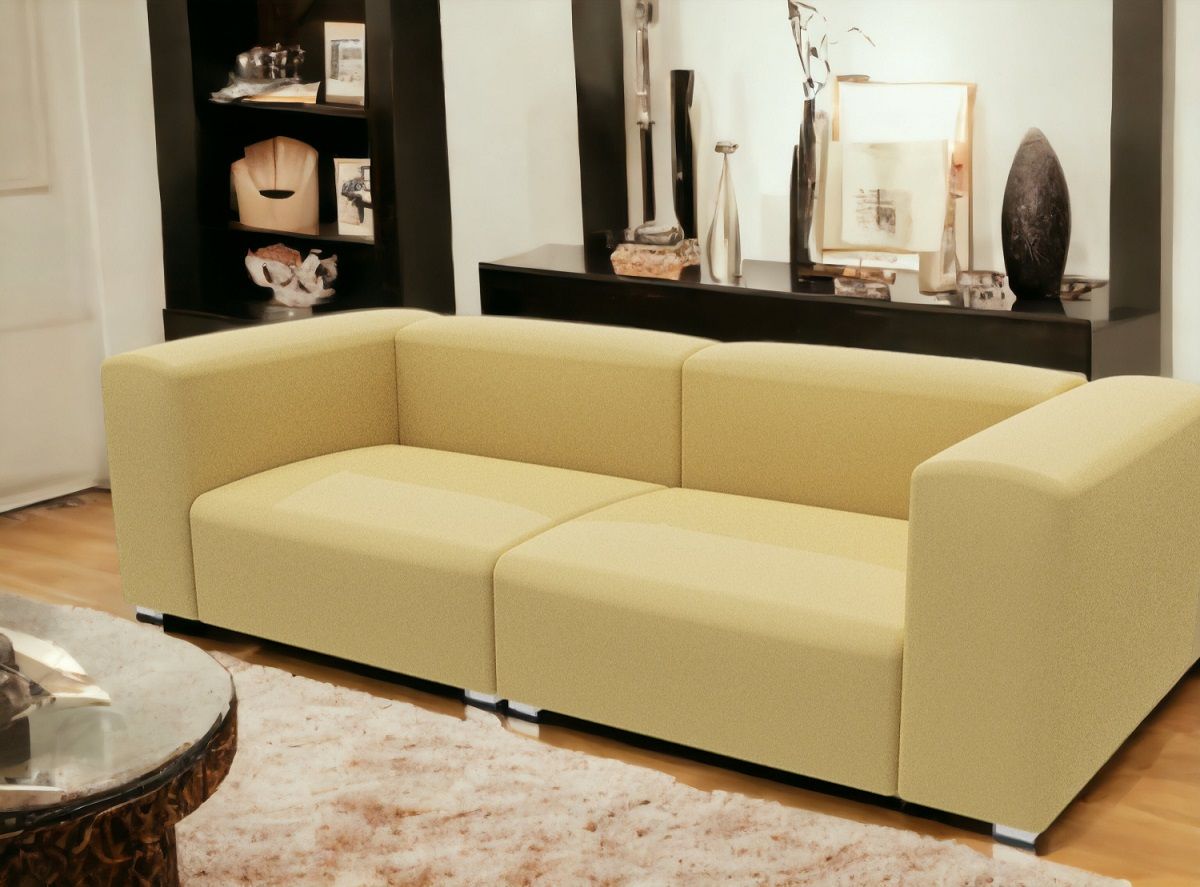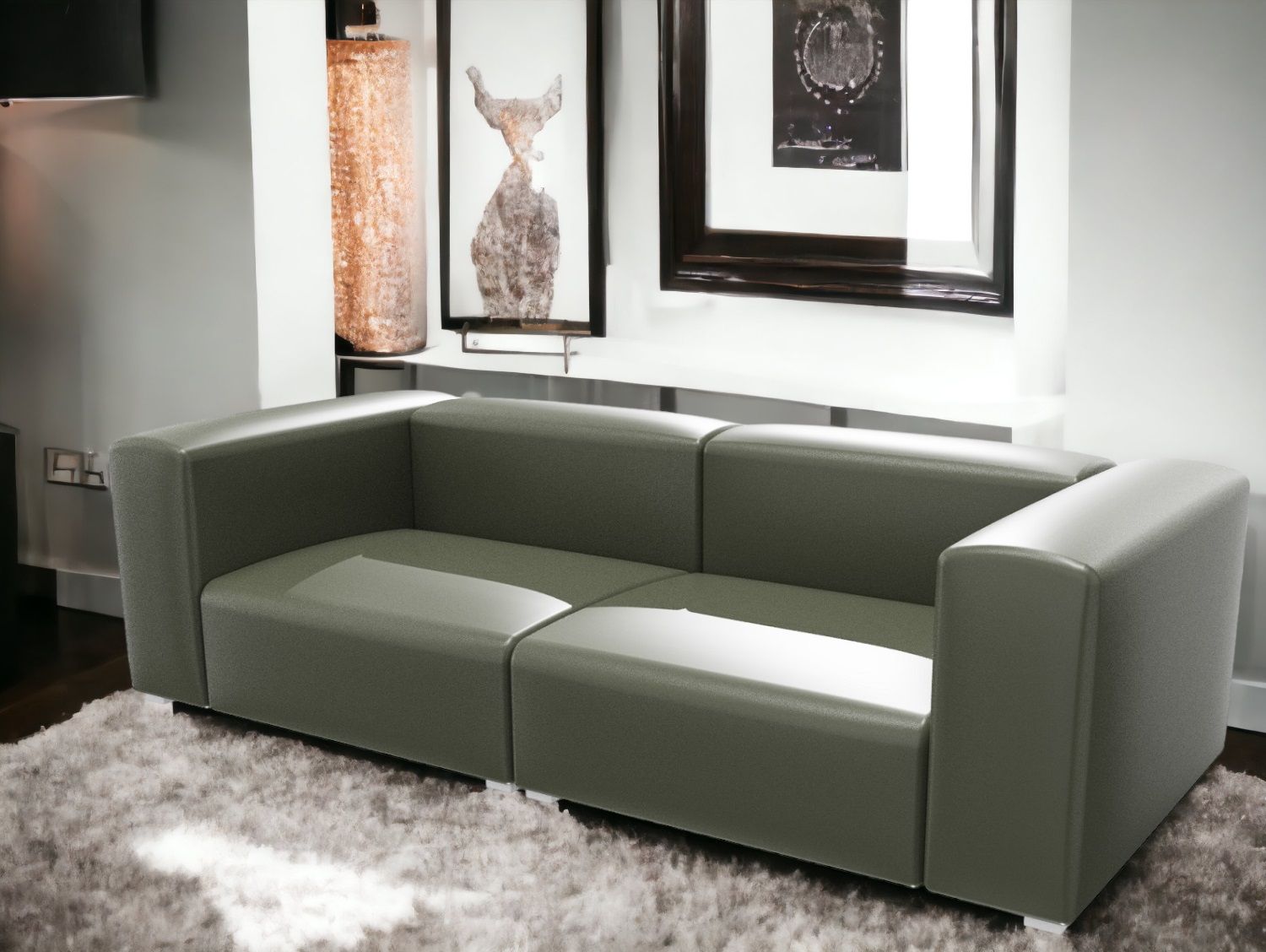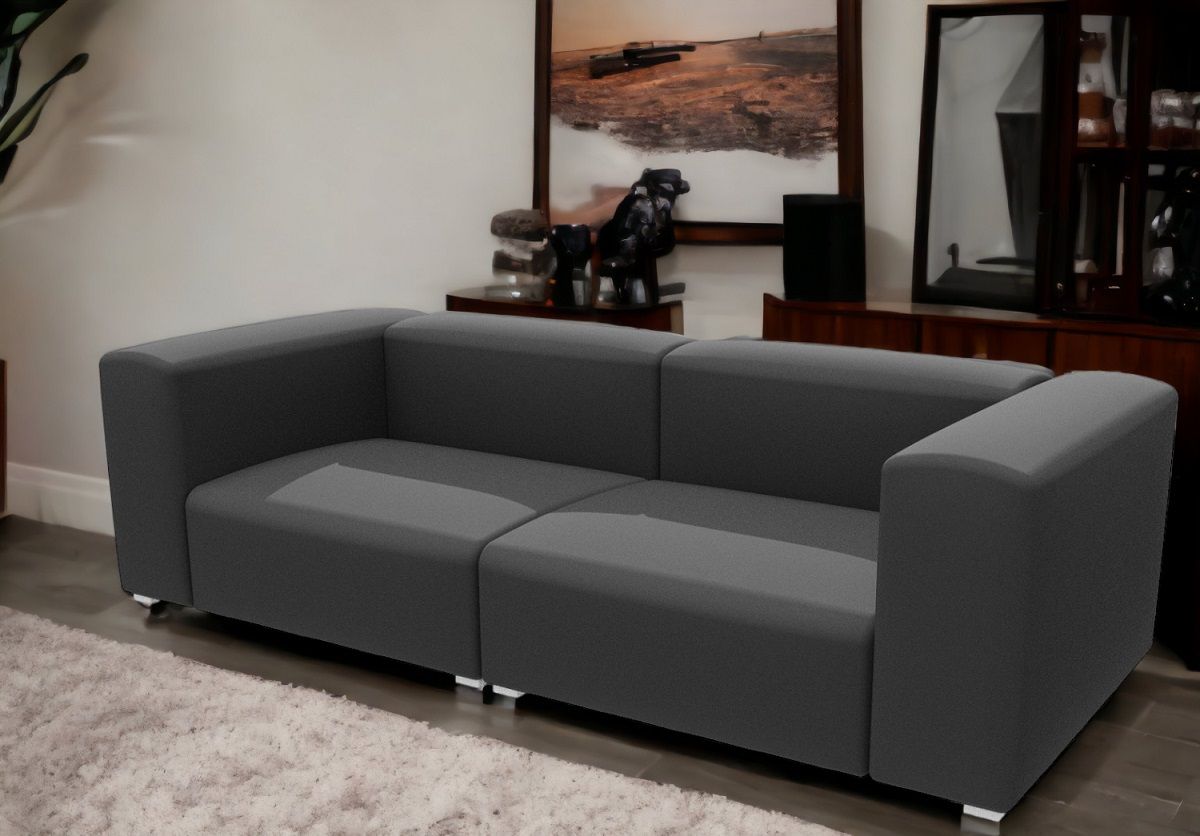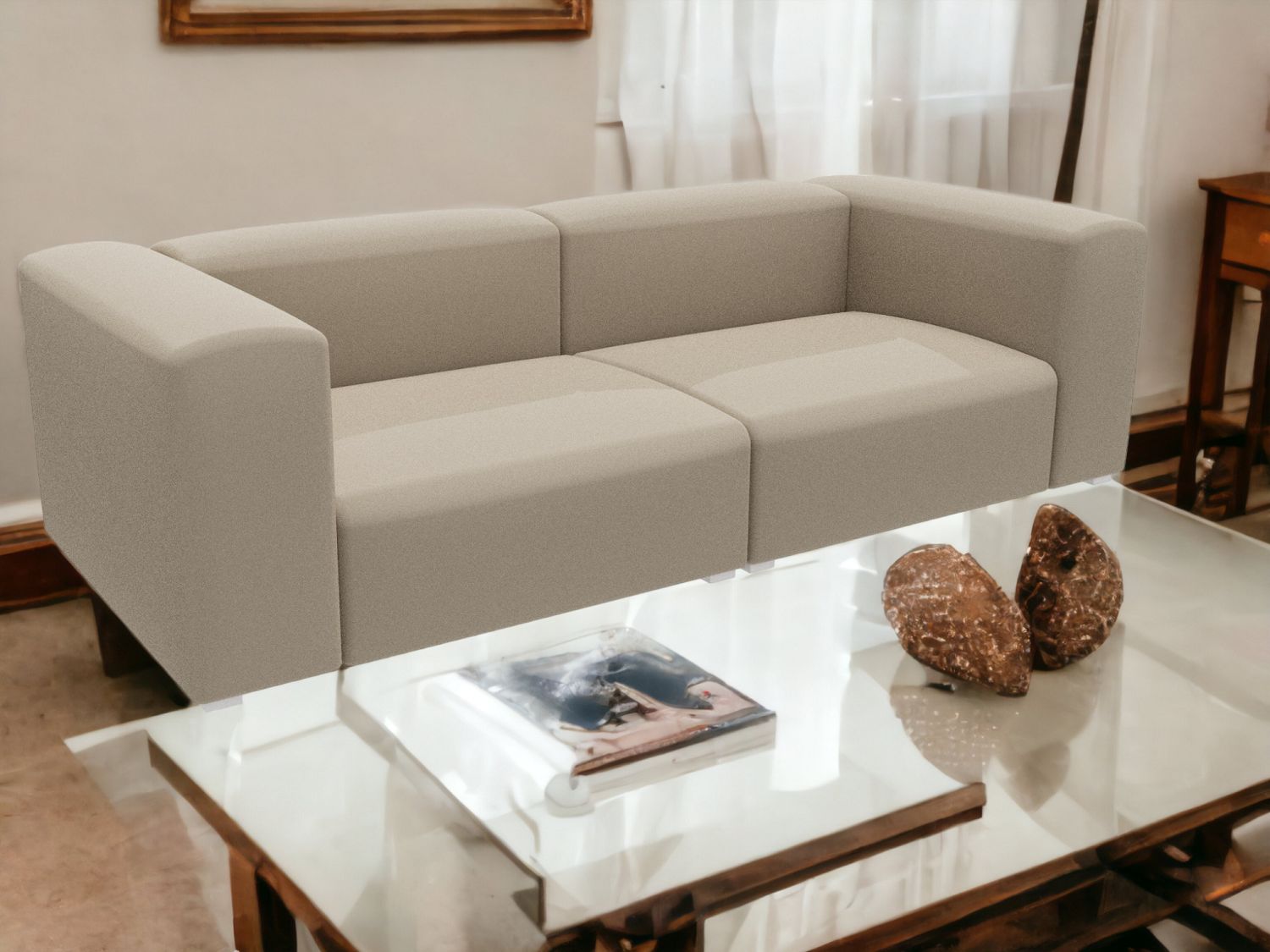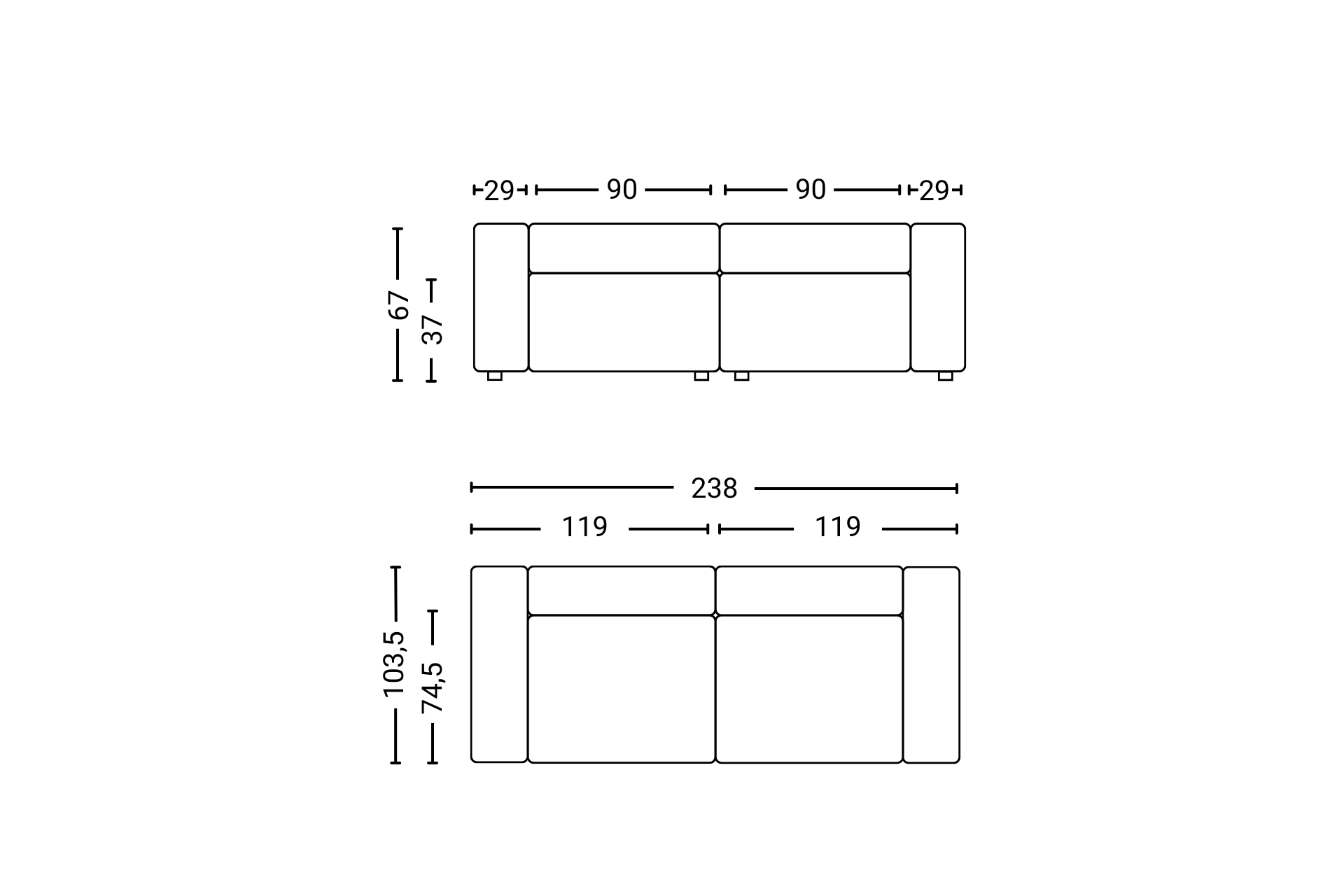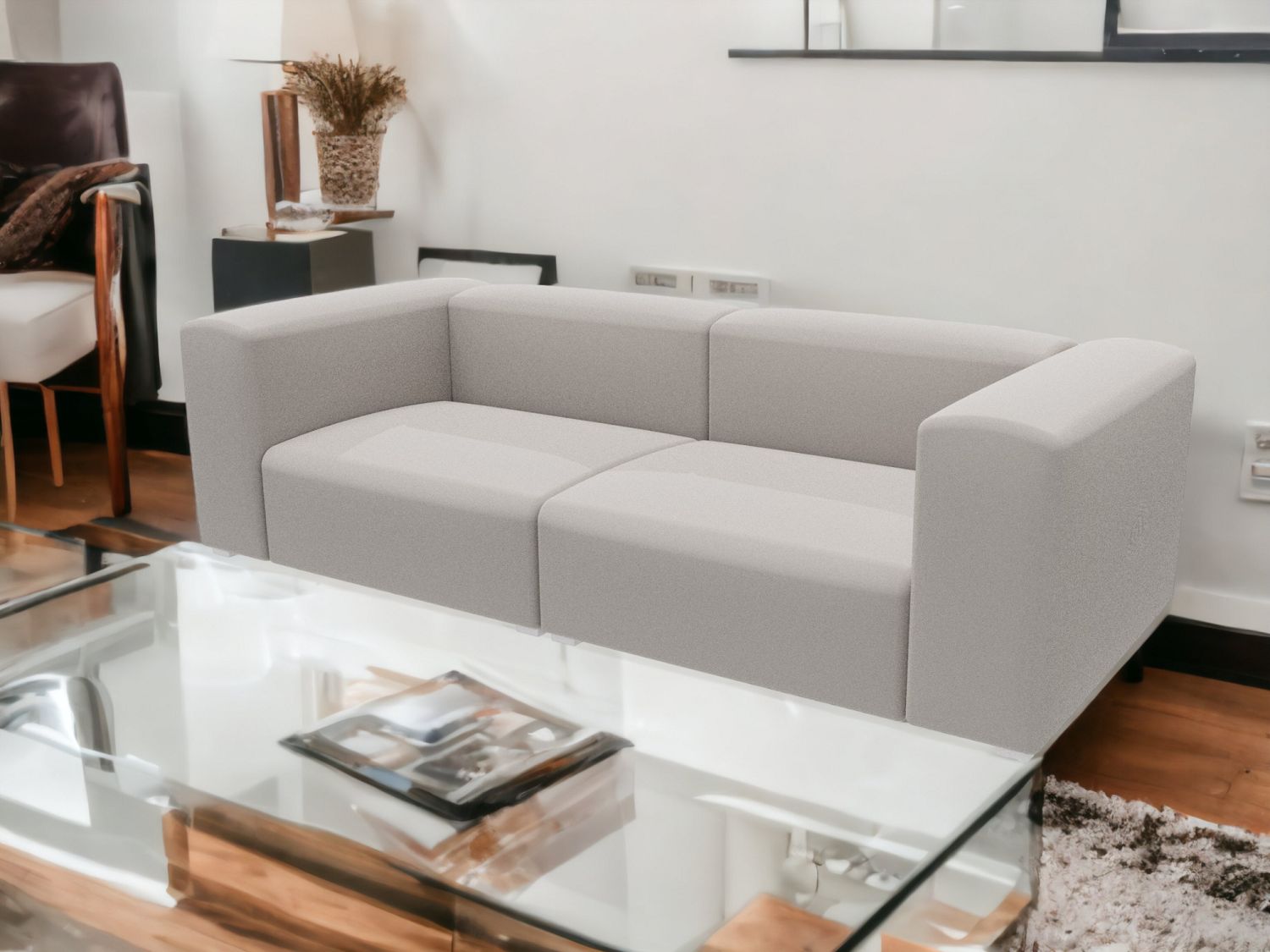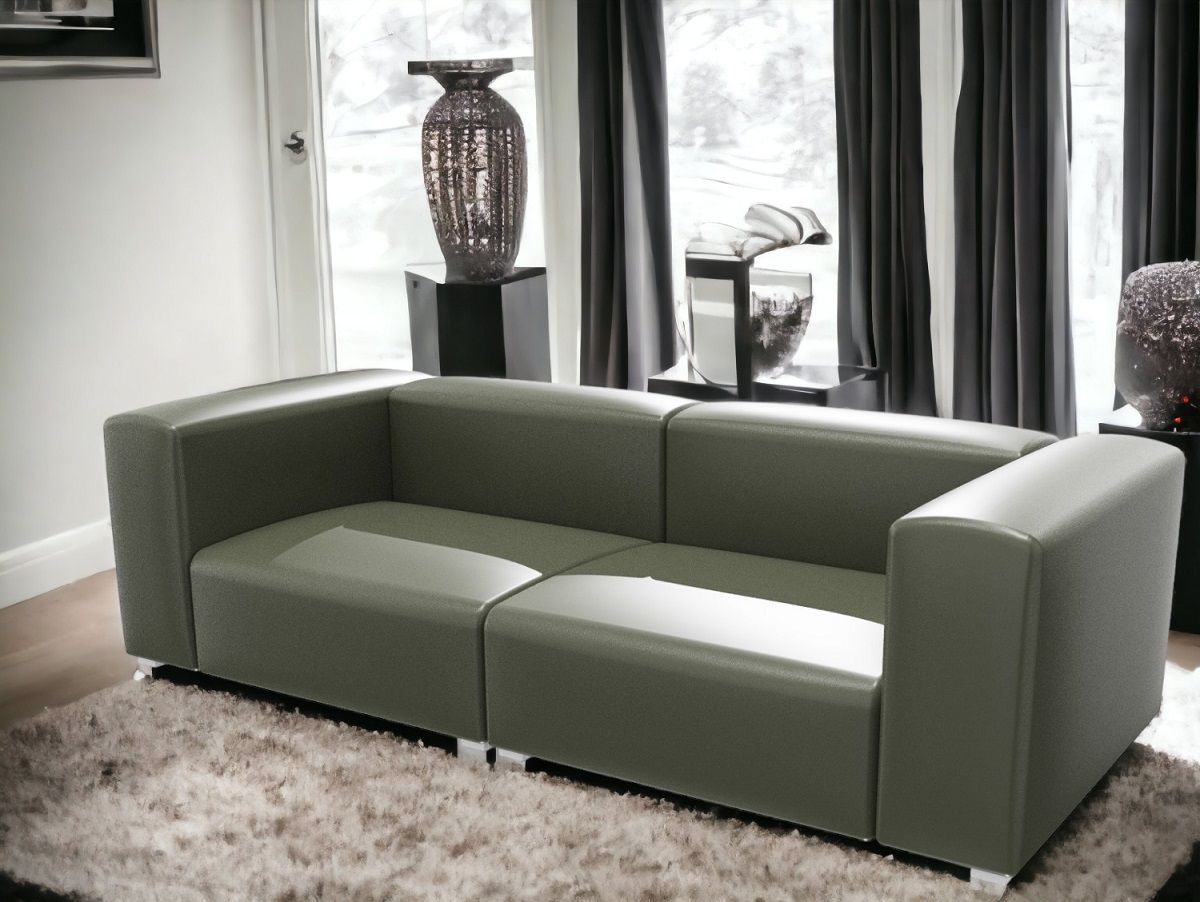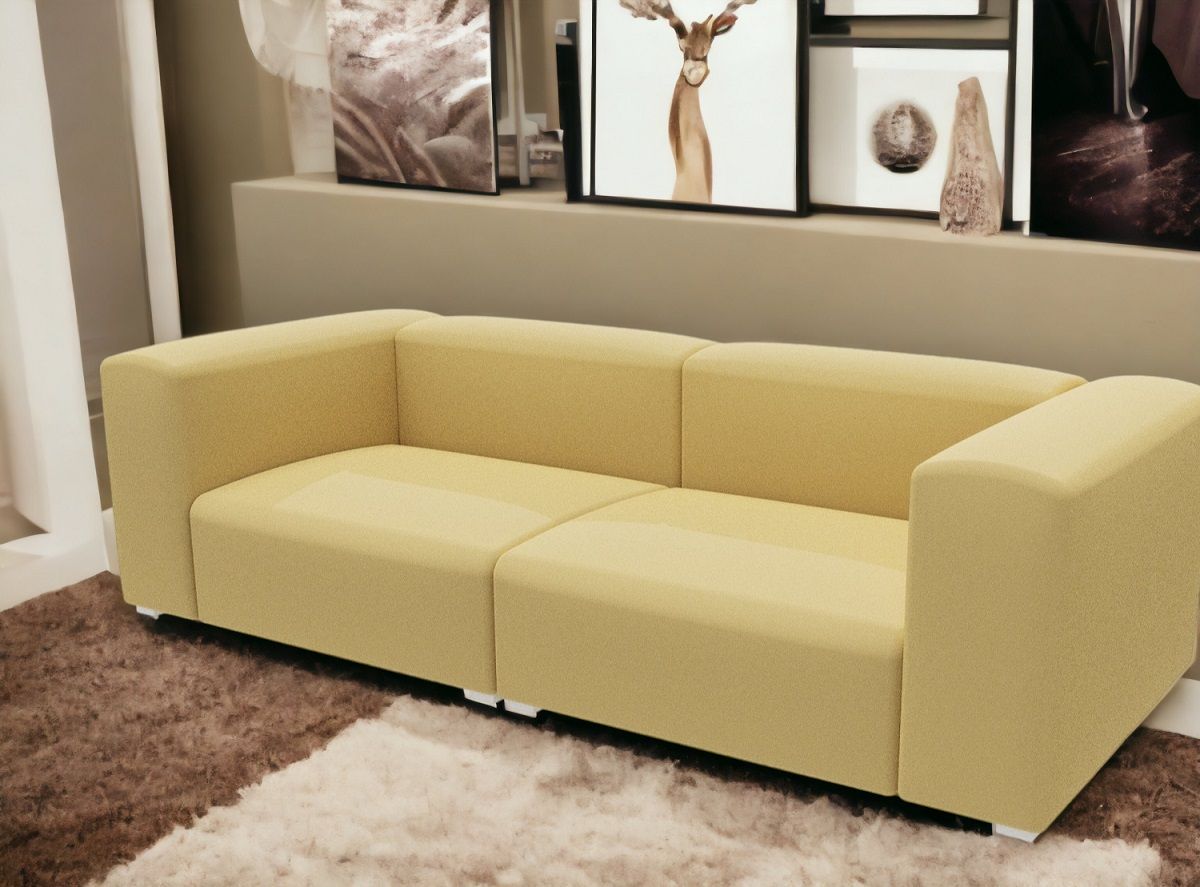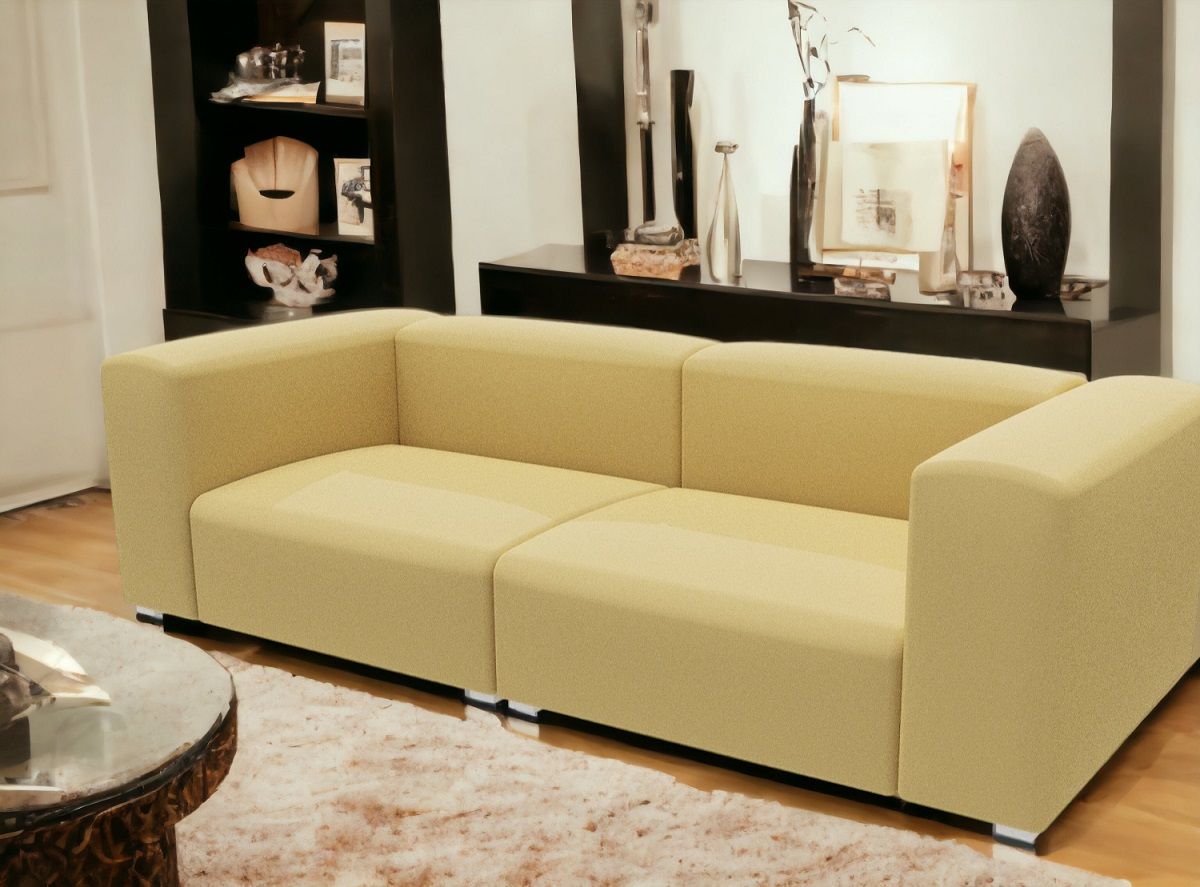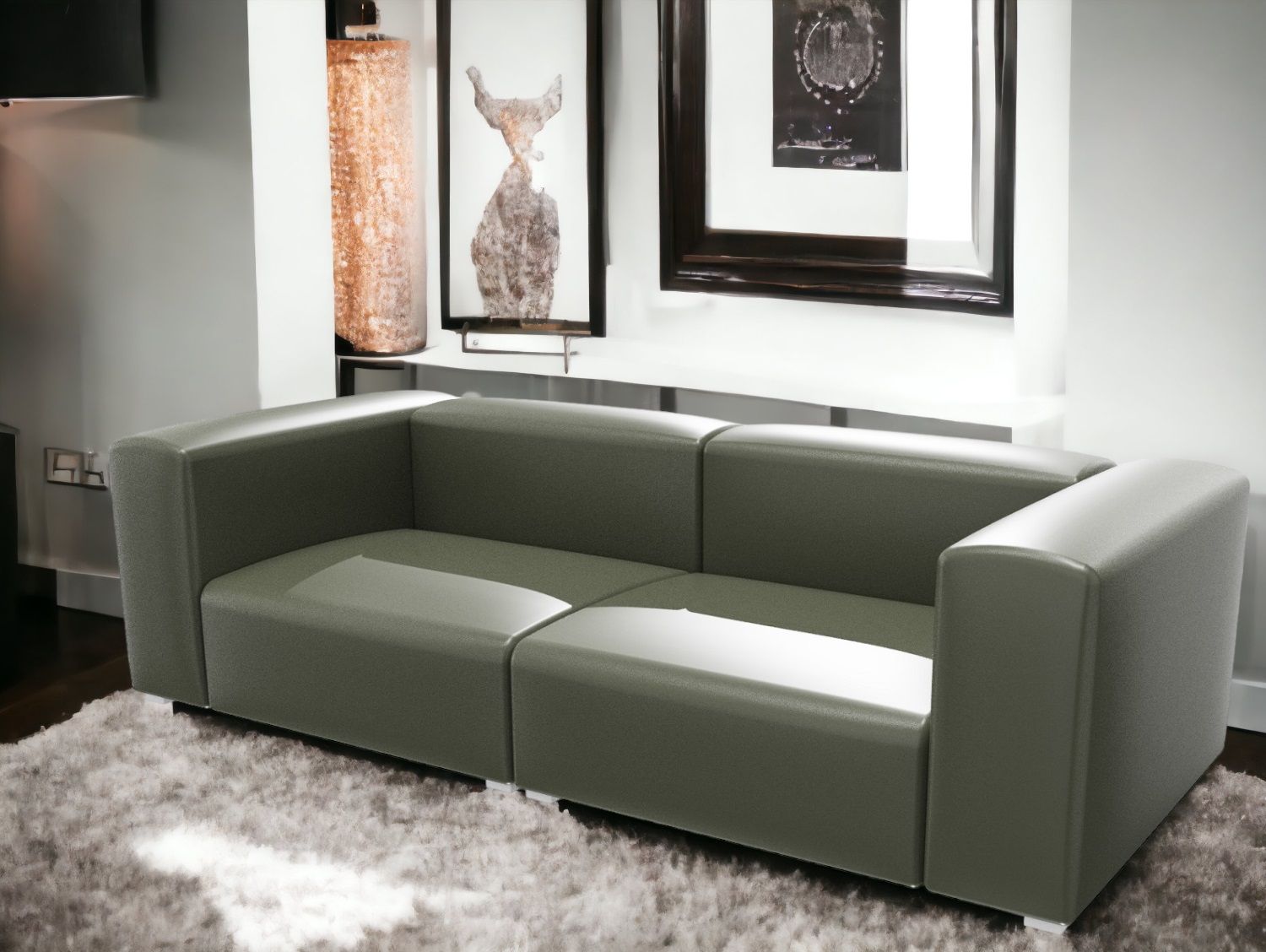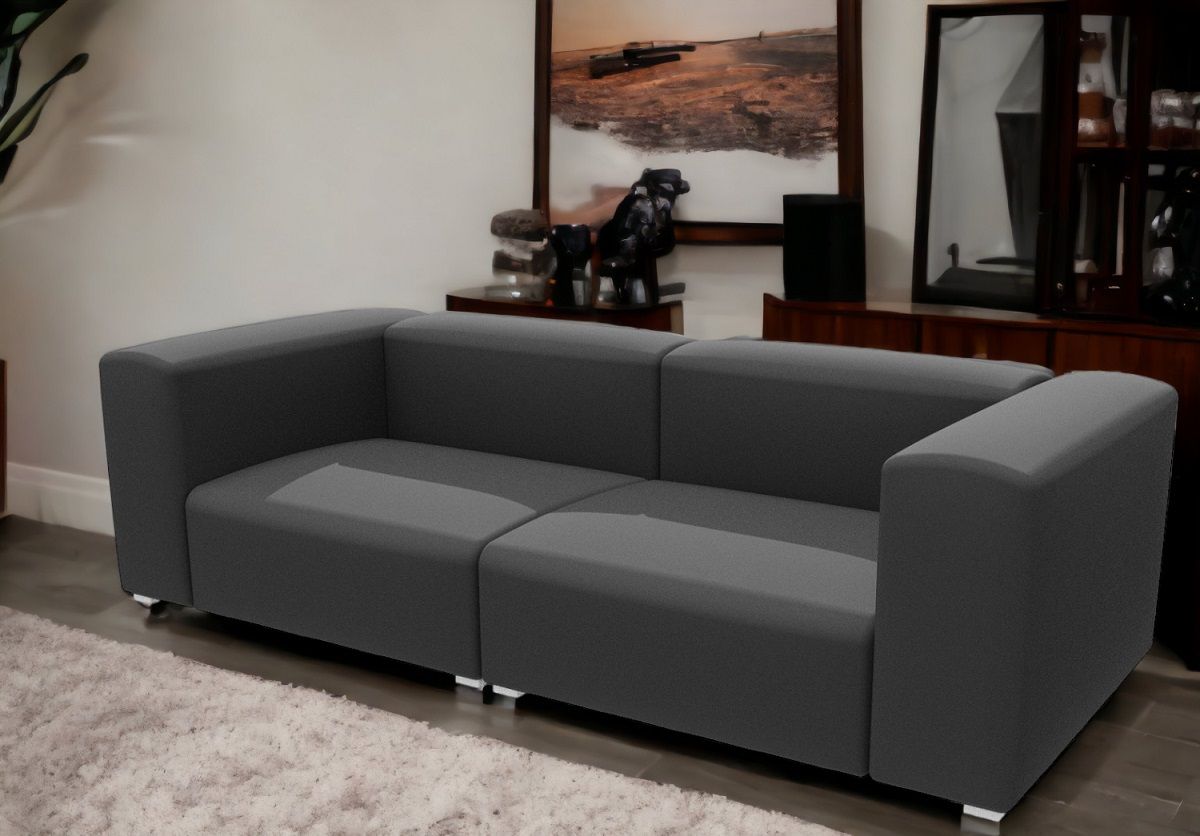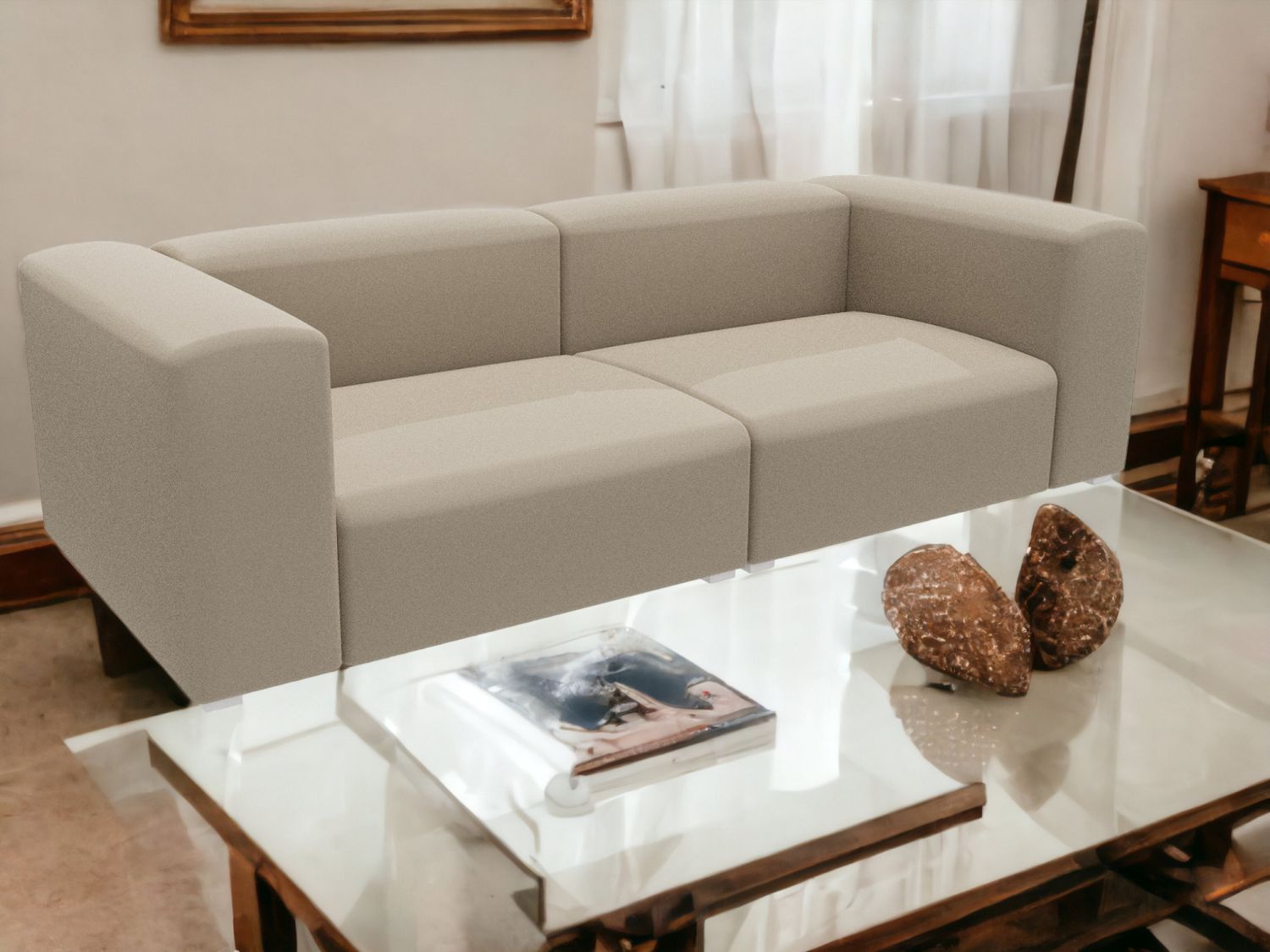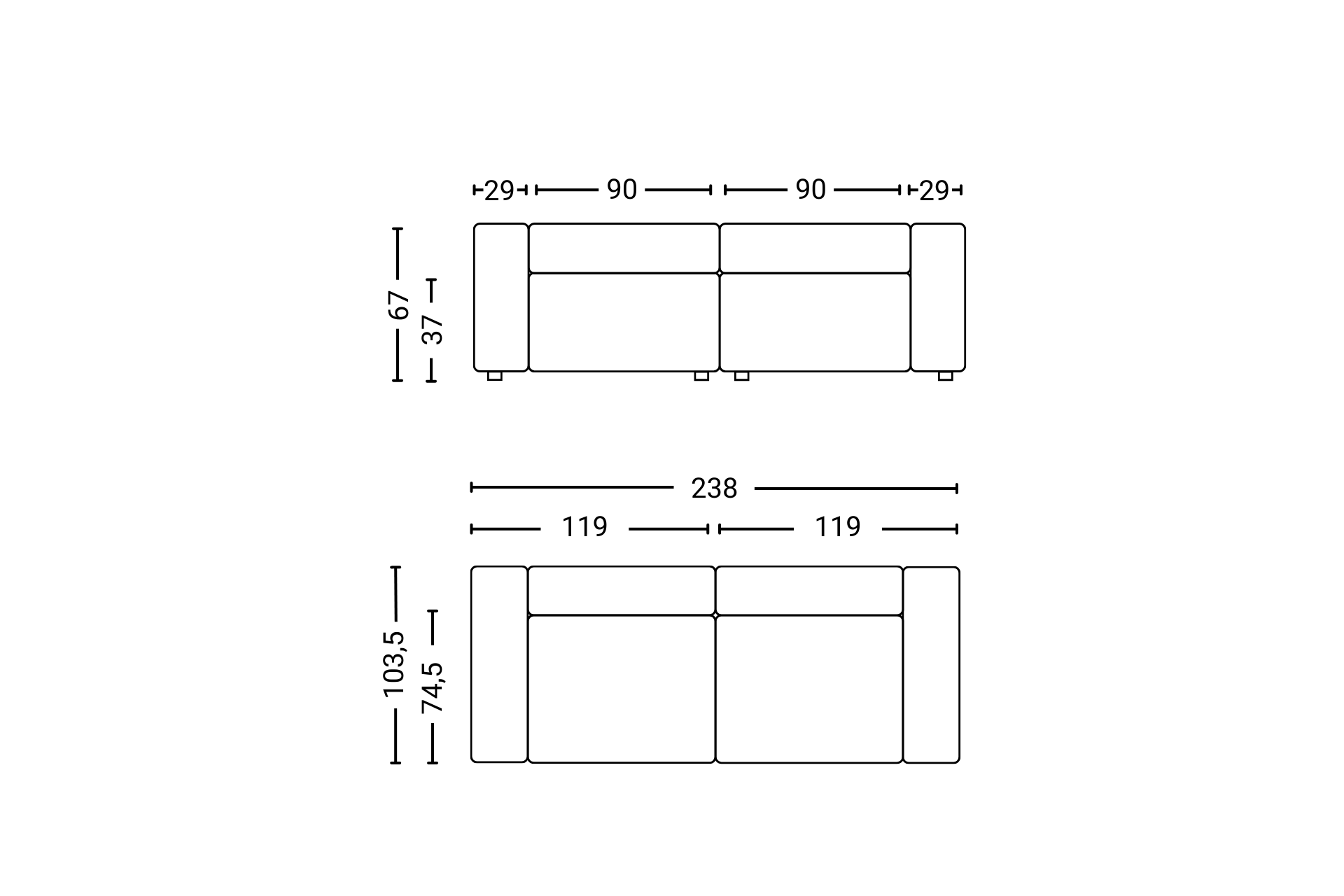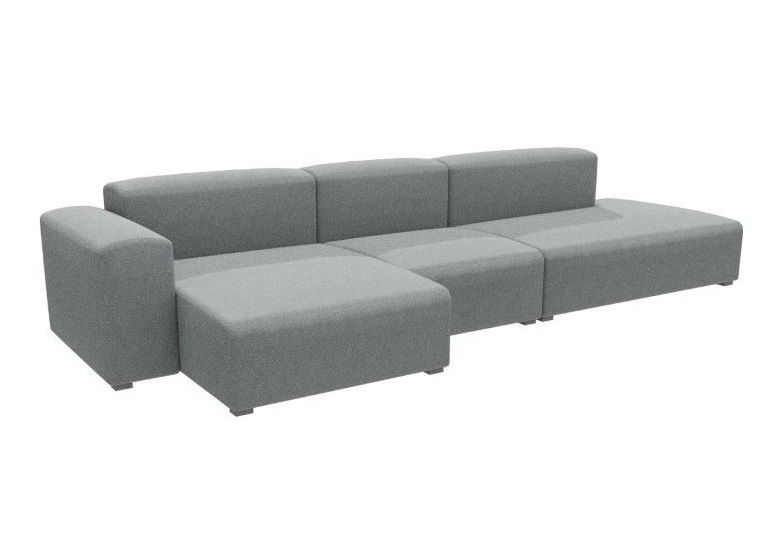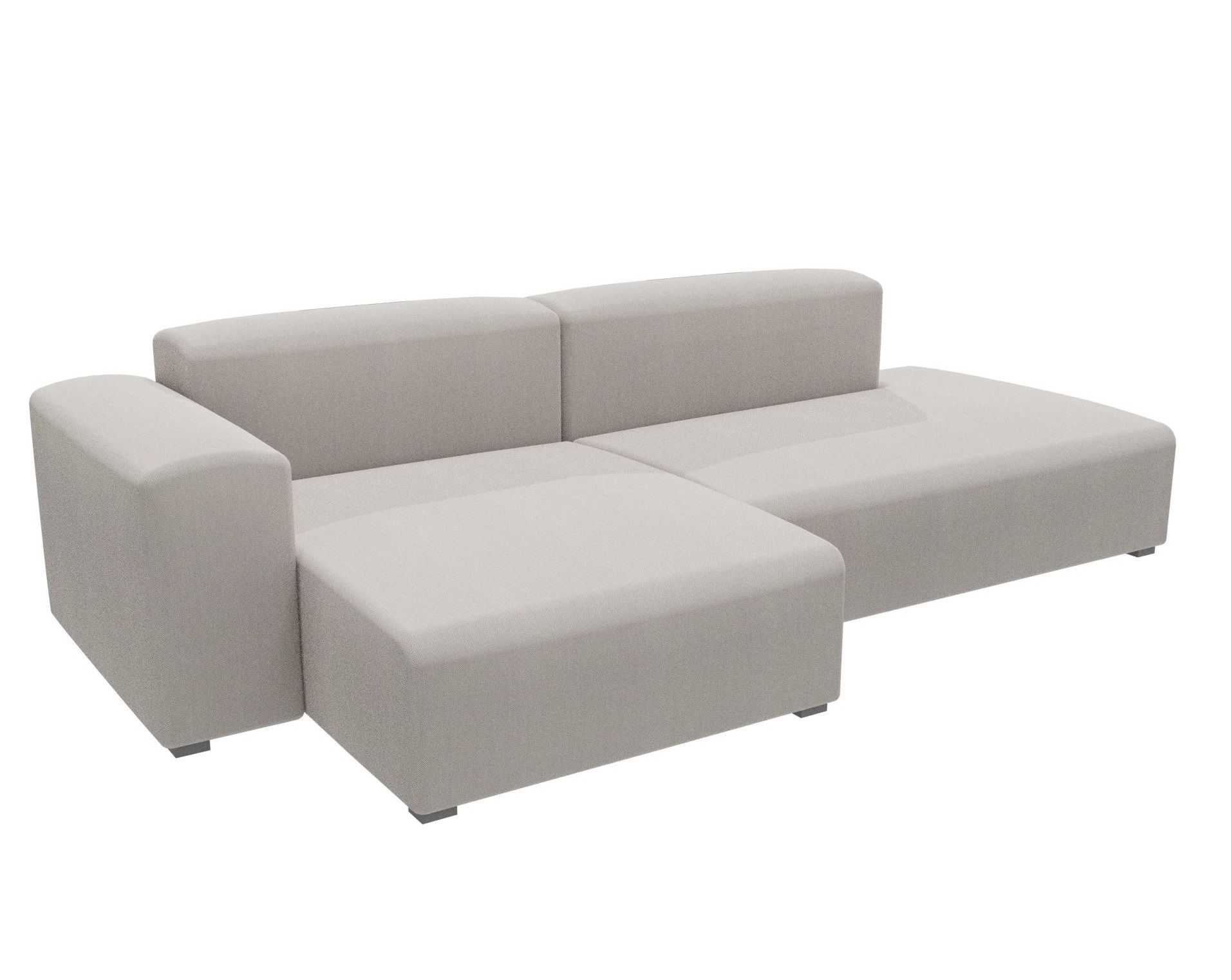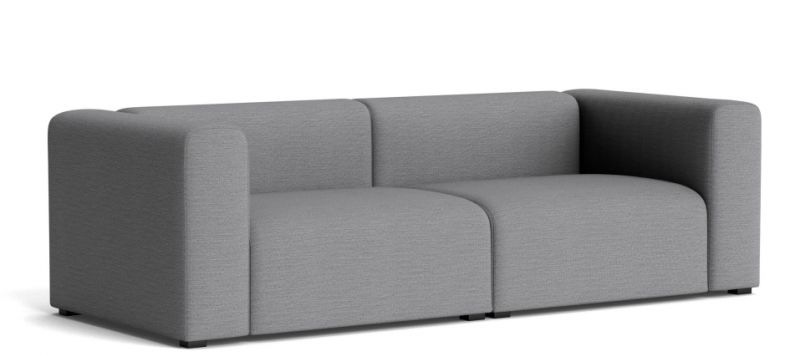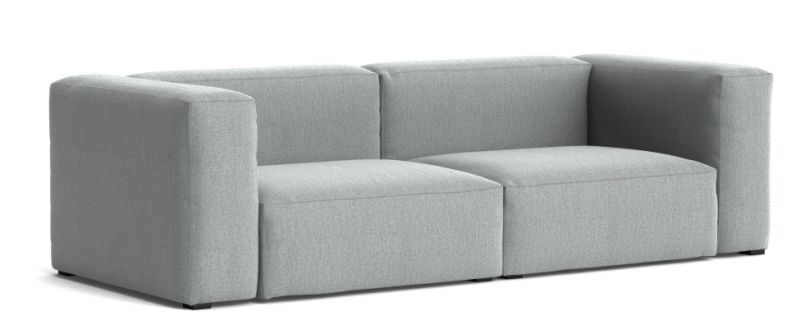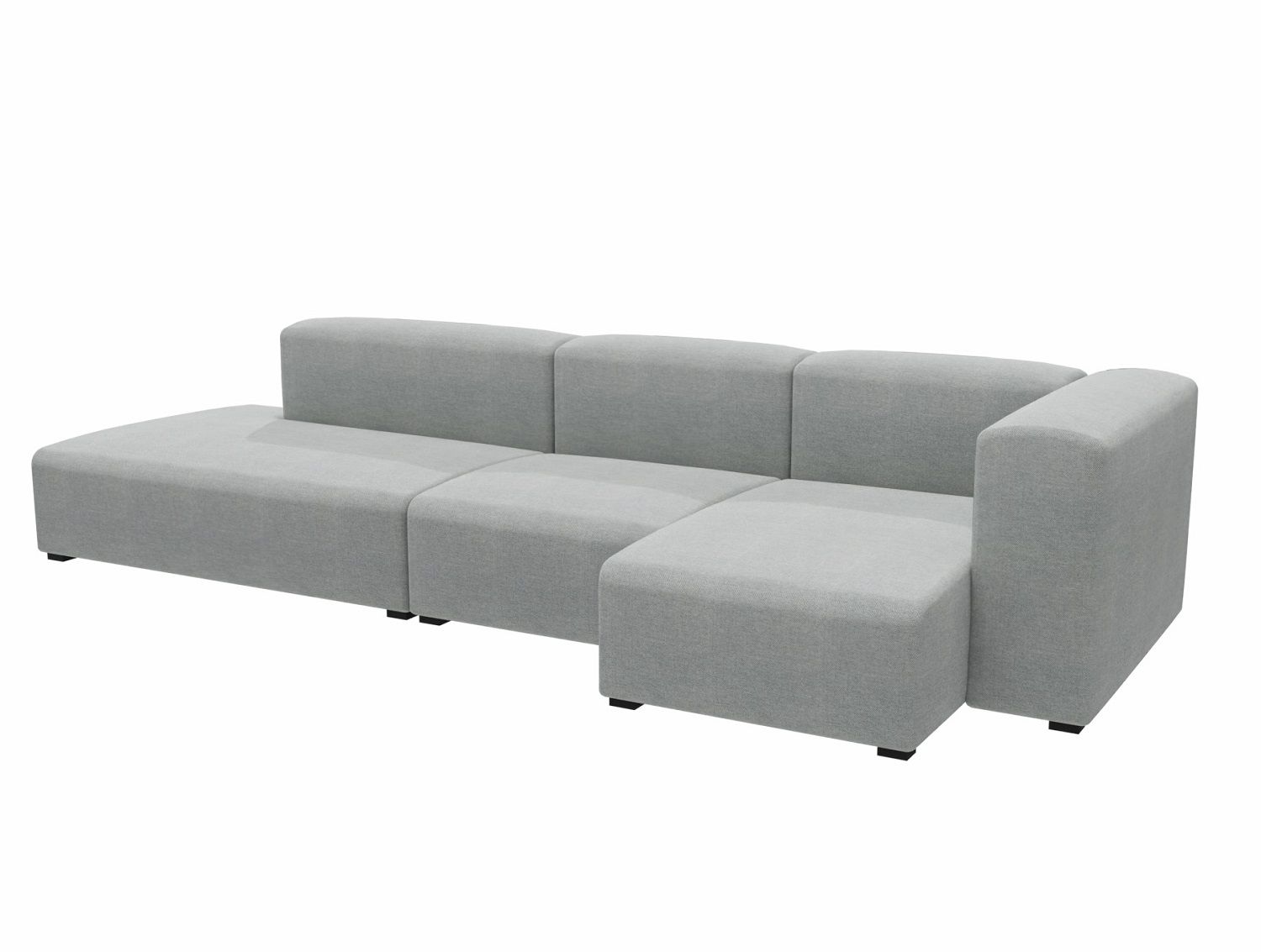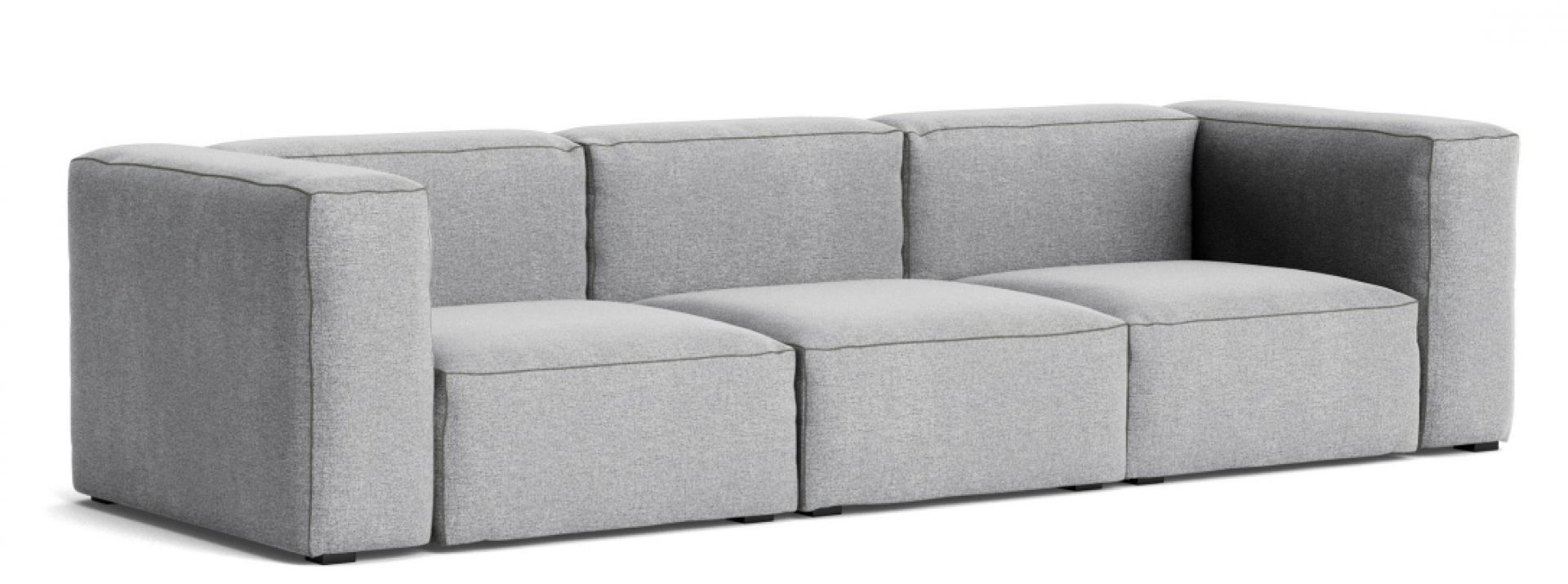Relaxed posture: Mags sofa from Hay
Rounded edges and soft cushions create a relaxed relaxed and comfortable look - but the Mags sofa from Hay is much more than just cosy. It is available in many different versions so that everyone can find their favourite model.
A solid construction and hard-wearing foam make comfort and durability the core values of this designer sofa. Down padding also ensures a particularly pleasant sitting and reclining experience. The perfect sofa for cosy days.
Material and format
The frame of the Mags sofa is made of wood. The upholstery consists of polyurethane foam with a spring core. The legs are made of black lacquered pine wood. The sofa is close to the floor, which means that you cannot vacuum underneath it. You can see the exact dimensions of the sofa under Dimensions/Info or in the technical drawing in the image material.
Please note that you must specify your preferred seam colour for all Mags Soft products. You can do this during the ordering process under remarks. The available colours are black, white, light grey, dark grey and beige.
Are you looking for a different model, in a different colour or with a different cover?
We offer the sofa here with ready-made covers. This sofa is also available with other covers and colours on request. Simply contact us if you are interested. You can also get a first impression under "Downloads", where you will find further information on the sofa series.
Fabric material of the combination shown
Hallingdal
The Hallingdal fabric from Kvadrat consists of 70% virgin wool and 30% viscose. It is considered an icon of textile design and is the first woollen fabric produced by Kvadrat. The two materials used in its production complement each other perfectly: wool gives Hallingdal durability and flexibility, while viscose gives the fabric colour brilliance and depth.
Hallingdal has a resistance of 100,000 Martindale. The Martindale method is used to test fabrics for abrasion resistance. For private rooms, the minimum requirements are 10,000 to 15,000 Martindale. In public areas, these are between 25,000 and 45,000.
The pilling of the fabric is 3-4 (the ISO rating scale is 1-5, with 5 being the best grade). Pilling is the technical term for the formation of matted fibre ends, so-called "pills", which can occur on the surface of a fabric due to wear.
The lightfastness for Hallingdal is 7, a unit of measurement that indicates how textiles behave when exposed to light. The rating scale ranges from 1-8, with 8 being the best rating. The lightfastness doubles with each level, which means that the same level of fading lasts twice as long.
Nevada
Nevada is a leather from the manufacturer Camo Leathers. It is an elegant and smooth aniline leather. It is made from southern German bull hides and is available in classic colours. Insect bites, healed wounds and other "natural features" occur and emphasise the fact that NEVADA is a natural product in a class of its own. Due to the natural character of leather as a material, colour and grain variations are possible.
Nevada leather is manufactured free of chrome (FOC) and without the use of environmentally harmful PCP and CFCs. It fulfils all norms and standards in accordance with the REACH declaration.
Re-Wool
The fabric Re-Wool consists of 45% virgin wool, worsted yarn and 45% recycled wool, as well as 10% nylon. Re-Wool is particularly sustainable due to the reuse of waste from the manufacturer Kvadrat. Leftover spun yarn is collected and processed into the yarn for the Re-Wool fabric. Designer Margrethe Odgaard says: "The idea was to create a textile that is both honest and environmentally friendly with a poetic touch by recycling waste from Kvadrat's own production".
Re-Wool has a resistance of 100,000 Martindale. The Martindale method is used to test fabrics for abrasion resistance. For private rooms, the minimum requirements are 10,000 to 15,000 Martindale. In public areas, these are between 25,000 and 45,000.
The pilling of the fabric is 4 (the ISO rating scale is 1-5, with 5 being the best grade). Pilling is the technical term for the formation of matted fibre ends, so-called "pills", which can occur on the surface of a fabric due to wear.
The light fastness for Re-Wool is 6, a unit of measurement that indicates how textiles behave when exposed to light. The rating scale ranges from 1-8, with 8 being the best rating. The light fastness doubles with each level, which means that the same level of fading lasts twice as long.
Vidar
The Vidar fabric is made from 94% virgin wool and 6% nylon. Woven from bouclé yarns in a regular loop size, Vidar has a deep, firm, coarse-grained structure. Vidar is tightly woven and does not have the irregularities of Kvadrat's other bouclé fabrics. The fabric has an inviting texture reminiscent of blackberries, orange peel or the pleasant close-knit structure of your favourite jumper.
Vidar has a resistance of 100,000 Martindale. The Martindale method is used to test fabrics for their abrasion resistance. For private rooms, the minimum requirements are 10,000 to 15,000 Martindale. In public areas, these are between 25,000 and 45,000.
The pilling of the fabric is 4 (the ISO rating scale is 1-5, with 5 being the best grade). Pilling is the technical term for the formation of matted fibre ends, so-called "pills", which can occur on the surface of a fabric due to wear.
The light fastness for Vidar is 7, a unit of measurement that indicates how textiles behave when exposed to light. The rating scale ranges from 1-8, with 8 being the best rating. The light fastness doubles with each level, which means that the same level of fading lasts twice as long.


